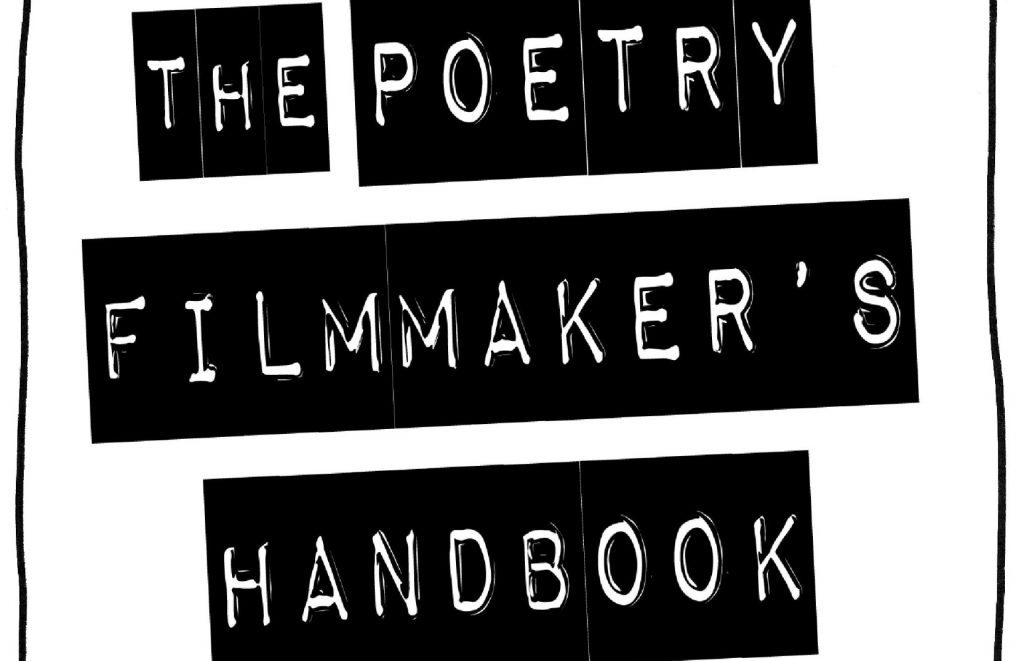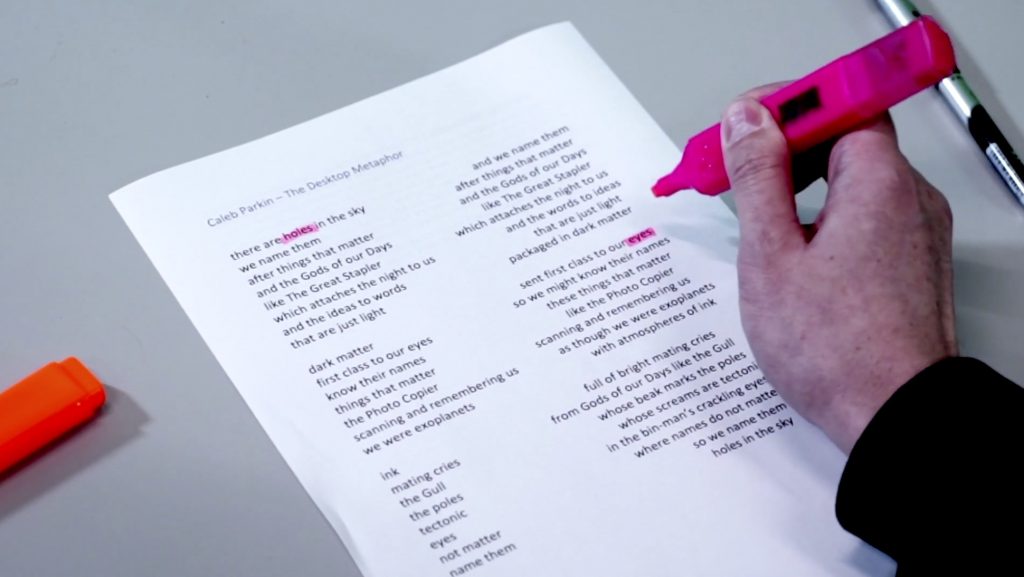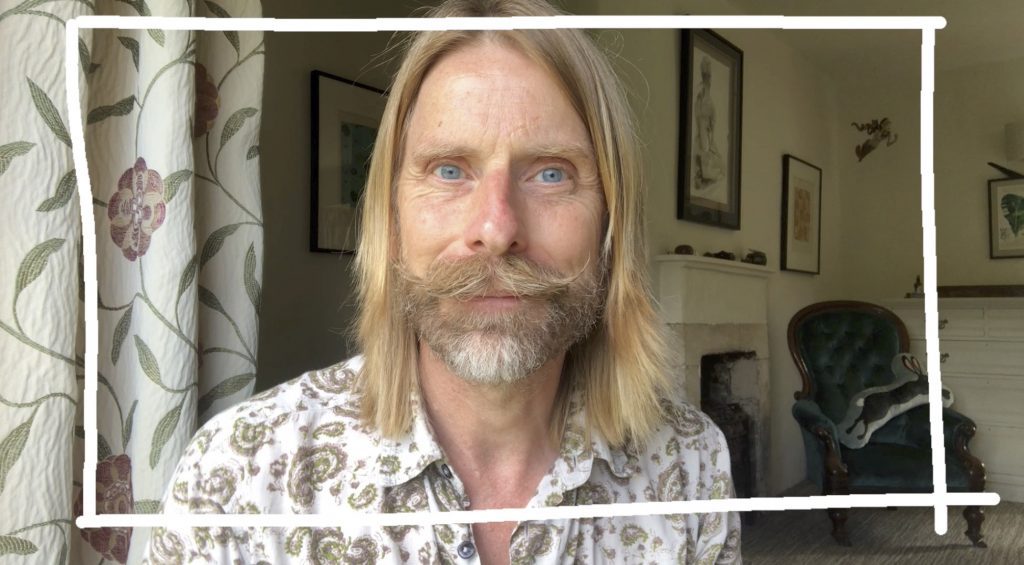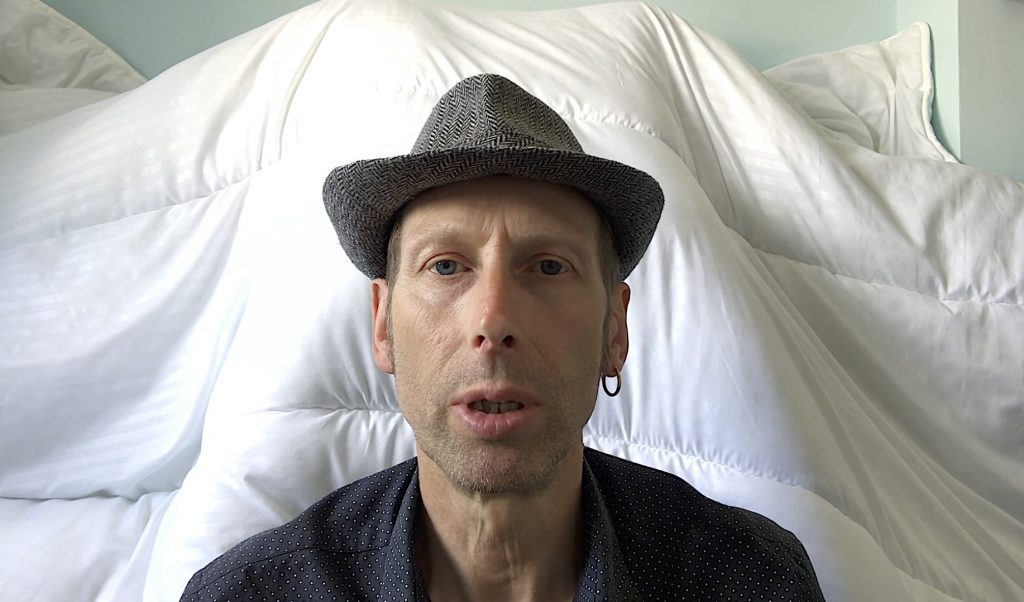
There are plenty more tips and ideas in my chapter ‘Making a Poetry Film’ in the Nine Arches book Poetry Projects to make and Do
With an array of real-life examples from experienced poets, Poetry Projects to Make and Do provides imaginative case studies and inspiration for readers to roll up their sleeves and get stuck in. Each essay encourages experimentation whilst also supplying plenty of practical tips and guidance.
Nine Arches Press
An Introduction to Making Poetry Films – Helen Dewbery
Poetry film combines poetry with images and sound. The poetry can be text on screen or spoken as a voiceover, images can be still or moving, sound can be a combination of a voiceover, sound effects and music. I’ve always thought of poetry film as a form of poetry – it may be helpful to approach poetry film with that idea in mind.
There are different styles, genres, and types of poetry film. It’s always good to watch as many as you can, but it can seem overwhelming. So, to make it less complicated, for now maybe just think about these two:
Abstract – making full use of colours, movement, textures.
Location based – based on a specific location. Maybe the location of the poem or where it was written, or somewhere you know well.
Either of these approaches can include as much imagination as you can bring to it: blurring, layering, repetition and so on.
To make a poetry film you need
- A Poem You may already have a poem in mind. If it is a detailed poem, consider having more abstracted images and perhaps an emphasis on the physical voice. Whereas a poem with more space can have more detailed visuals. With either approach you will still be leaving space for the viewer’s imagination.
- Footage/Film Start to gather film on your phone. For example, you could record:
Elements – wind, rain, sun, snow
Movement – Walking, running, water
Nature – animals, landscape, fauna, trees
Environment – roads, pavements, transport, buildings, walls, fences
Use these as prompts to stimulate ideas. If you don’t use them for what you have in mind right now, they will come in handy for something later. - Equipment for filming and recording
You need something to film with and something record audio on – which may or may not be the same device. You probably have a good enough phone to record footage with. You can use your phone to record a voiceover, but if you can, get your hands on a voice recorder as it will generally record voice much better than your phone.You can enhance the creative capabilities of your phone with a film app, and there are many to choose from. I use FilmicPro. - Editing Software
Editing is the process of putting your film and audio together and rearranging it. You can do this on your phone, but you will have many more options if you edit on a laptop or computer.If you have a Mac, iMovie is an obvious choice. If you have Windows, try Capcut or Filmora. All these programs have excellent tutorials available online.
Tips when making poetry film
- Ask yourself how your images and film will relate to the poem? Think about the tone and the mood of the poem and the film. What is the intention of the poem? What does the poet want to convey? What is the feeling that the viewer gets from the film?
- Camera angles, distance and movement can be used for dramatic effect.
The tendency is to hold your camera in front of you in the middle (a mid-angle shot). But looking up (a low angle shot) often reveals something and looking down (a high angle shot) can show vulnerability.
Both low and high angles can show different power dynamics - Different camera distances can also contribute to the narrative.
A long shot is often an opening shot.
Close up shots shows intimacy or menace. And the longer the shot remains on the screen the more intimacy or fear the viewer experiences. - Try something different to the obvious.
Reflections not only give a different, perhaps unexpected viewpoint, but can give meanings of its own.
Repetition – moving water can be monotonous or mesmerizing/hypnotic.
Try different rhythms with the images, or a montage (a quick succession of images).
Slow motion can draw the viewer to look closer. - Your editing program will include filters – often there are so many you may not know where to start. Most filters are, in fact, just about changing the colours of your clips or changing movement. Changing or enhancing colour or movement affects emotions and meanings.
- Try and keep your phone steady when filming. Some sort of mini tripod is often useful or hold your phone against something to keep it from moving.
- Using still photos is fine, but having some movement makes things alive (water usually looks quite flat as a still image). If it’s meant to move, let it move – film it!
- Always, always, always film more than you ever think you’ll need.
In Search of the Perfect Poetry Film –
A Journey of Exploration!

The Poetry Filmmaker’s Handbook by James Harris and Laura Degnan
Reproduced here by kind permission from James and Laura,
and Apples and Snakes who commissioned the handbook.




